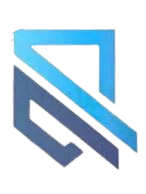Network systems

All network communications involve the use of hardware and software. The network communication support is determined by the hardware and the software necessary to run that hardware and interface with the network.
Hardware consists of the physical equipment that is connected to the physical network. Software consists of the programs and device drivers that are associated with the operation of a particular system. The system hardware consists of adapter or other devices that provide a path or interface between the system software and the physical network. An adapter requires an I/O card slot in the system. An adapter prepares all inbound and outbound data; performs address searches; provides drivers, receivers, and surge protection; supports different interfaces; and in general relieves the system processor of many communications tasks.
The following terms are used throughout the network management information:ProtocolsProtocols are sets of semantics and syntactical rules that define how information is delivered, how it is enclosed to reach its destination safely, and what path it follows. Protocols also coordinate the flow of messages and their acknowledgments.AddressesA network domain is an administrative grouping of multiple computer networks or hosts within the same infrastructure. Domains put the data processing resources in a network under a common control.
For example, the structure of the internet illustrates how domains define the Internet Protocol (IP) address. The internet is an extensive network that is made up of many different smaller networks. To facilitate routing and addressing, internet addresses are hierarchically structured in domains, with broad categories at the top such as com for commercial users, edu for educational users, and gov for government users. Within the com domain are many smaller domains corresponding to individual businesses; for example, ibm. Within the ibm.com domain are even smaller domains corresponding to the internet addresses for various locations, such as austin.ibm.com or raleigh.ibm.com. At this level, you can identify names of hosts. A host, in this context, is any computer that is connected to the network. Within austin.ibm.com, there might be hosts with the names hamlet and lear, which are addressed hamlet.austin.ibm.com and lear.austin.ibm.com.Gateways and bridgesA wide variety of networks reside on the internet that often uses different hardware and runs different software. Gateways and bridges enable these different networks to communicate with each other. A bridge is a functional unit that connects two LANs that possibly use the same logical link control (LLC) procedure, such as Ethernet, but different medium access control (MAC) procedures. A gateway has a broader range than a bridge. It operates above the link layer and, when required, converts the interface and protocol used by one network into those used by another distinct network. Gateways allow data transfers across the various networks that constitute the internet.Data routingUsing domain names for addressing and gateways for translation greatly facilitates the routing of the data that is being transferred. Routing is the assignment of a path by which a message reaches its destination. The domain name effectively defines the message destination. In a large network like the internet, information is routed from one communications network to the next until that information reaches its destination. Each communications network checks the domain name and based on the domains with which that network is familiar, routes the information on to the next logical stop. In this way, each communications network that receives the data contributes to the routing process.Local and remote nodesA physical network is used by the hosts that reside on that network. Each host is a node on the network. A node is an addressable location in a communications network that provides host-processing services. The intercommunication of these various nodes is defined as local or remote. Local pertains to a device, file, or system accessed directly from your system, without the use of a communications line. Remote pertains to a device, file, or system accessed by your system over a communications line. Local files reside on your system, while remote files reside on a file server or at another node with which you communicate by using a physical network, for example, Ethernet, token-ring, or phone lines.Client and ServerA server is a computer that contains data or provides facilities to be accessed by other computers on the network. A client is a computer that requests services or data from a server. Common server types are file servers, which store files; name servers, which store names and addresses; and application servers, which store programs and applications; print servers, which schedule and direct print jobs to their destination.
A client can request updated program code or the use of applications from a code server. To obtain a name or address, a client contacts a name server. A client can also request files and data for data entry, inquiry, or record update from a file server.
Network systems installation in Kenya, Network systems in Uganda Nairobi Network systemsin Kenya, Uganda,
Tanzania,Baragoi,Bungoma,Busia,
Butere,Dadaab,Diani Beach,Eldoret,
Emali,Embu,Garissa,Gede,HolaHoma Bay,Isiolo,
Kitui,Kibwezi,Kajiado,Kakamega,Kakuma,Kapenguria,
Kericho,Keroka,Kiambu,Kilifi,Kisii,Kisumu,Lamu,Langata,
Litein,Lodwar,Lokichoggio,Londiani,Loyangalani,Machakos,
Makindu,Malindi,Mandera,Maralal,Marsabit,Meru,Mombasa,
Moyale,Mumias,Muranga,Mutomo,Nairobi,Naivasha,Nakuru,Namanga,
Nanyuki,Naro Moru,Narok,Nyahururu,Nyeri,Ruiru,Shimoni,Takaungu,
Thika,Vihiga,Voi,ajir,Watamu,Webuye,Wote,WundanyiKenya,Nairobi,
mombasa,Karen ,muthaiga,yaya,lavington,runda,kiambu,ruaka,kinoo,uthiru,
limuri,kikuyu,ongata rongai,keseriani,syiokimau,Athiriver,kitengera,utawala,
gatonyora,kamakis,ruai,jujais among the authorised







